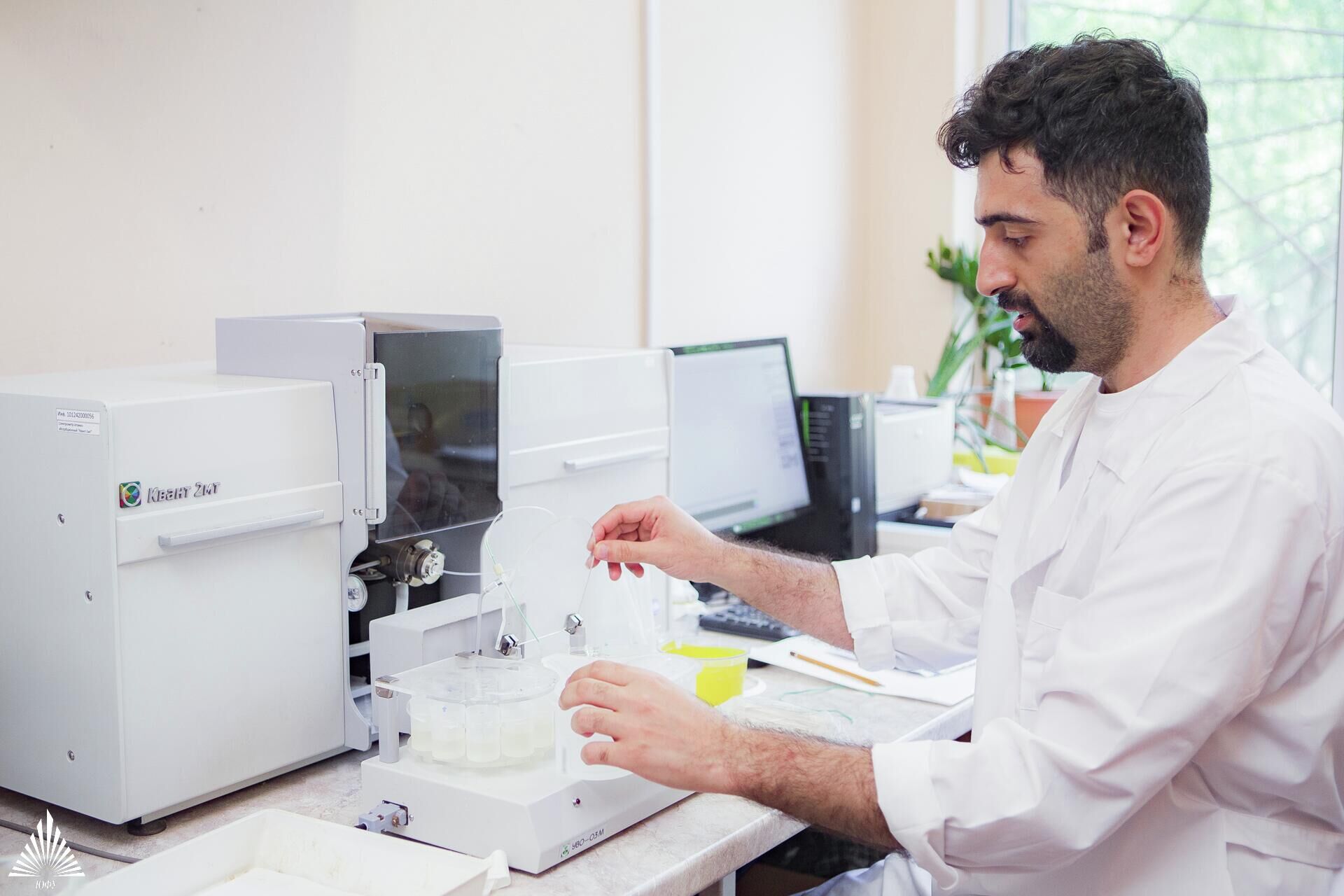https://sputnikglobe.com/20220921/graphene--sunlight-can-help-tackle-water-pollution-scientists-suggest-1101036401.html
Graphene & Sunlight Can Help Tackle Water Pollution, Scientists Suggest
Graphene & Sunlight Can Help Tackle Water Pollution, Scientists Suggest
Sputnik International
The new technology essentially allows for pollutants to be turned into non-toxic final products (e.g., carbon dioxide and water) without generating secondary... 21.09.2022, Sputnik International
2022-09-21T13:09+0000
2022-09-21T13:09+0000
2023-04-21T10:42+0000
science & tech
russia
graphene
pollution
https://cdn1.img.sputnikglobe.com/img/105685/05/1056850539_0:152:1280:872_1920x0_80_0_0_147cf71fe6f13666cff1a79c318c15f5.jpg
Russian and Iranian researchers have come up with a new water purification method that relies on sunlight to tackle chemical pollutants in rivers and lakes.The new method, developed by researchers at Russia's Southern Federal University (SFedU) together with their colleagues at Iran's Institute for Color Science and Technology and the University of Tehran, involves using graphene nanosheets activated by sunlight.Dr. Mahmoud Mazarji, a senior researcher at SFedU, who was involved in this project, explained that their photocatalyst showed similar efficiency compared to its analogues, commercial titanium dioxide, having higher than 90% effectiveness in the degradation of several textile dyes. More importantly, the technology of graphene catalyst manufacturing they’ve come up with is cheaper, simpler, and completely eco-friendly, compared to titanium dioxide.During the purification process, sunlight causes graphene nanosheets to generate oxidative radicals responsible for degrading colorful toxic molecules, resulting in concentrated pollutants turning into relatively harmless carbon dioxide. It is noteworthy to mention that with a global dye production of 450,000 tons, dye effluents are constantly released into the aquatic environment, causing unpleasant side effects. Due to coloring, toxicity, mutagenicity, and carcinogenicity characteristics, the treatment of these dyes is of high priority.The new water purification process is meant to be introduced into the existing water treatment infrastructure, the researchers point out, adding that their nanocatalyst is designed to be reusable and recyclable, and can be used as a one-unit process in tertiary water treatment."To obtain photoactive graphene, we first oxidize the abundant graphite using the modified Hummers’ method. Finally, as part of our green strategy, we have implemented two step reduction methods via hydrothermal and calcination in the nitrogen atmosphere. More details are given in our published paper in the prestigious Journal of Nanomaterials 2022, 12(3), 374."Dr. Mahmoud Mazarji also noted that facilities capable of producing large quantities of graphene already exist, and expressed hope that the technology their team developed will be implemented in the near future.
russia
Sputnik International
feedback@sputniknews.com
+74956456601
MIA „Rosiya Segodnya“
2022
Sputnik International
feedback@sputniknews.com
+74956456601
MIA „Rosiya Segodnya“
News
en_EN
Sputnik International
feedback@sputniknews.com
+74956456601
MIA „Rosiya Segodnya“
Sputnik International
feedback@sputniknews.com
+74956456601
MIA „Rosiya Segodnya“
science & tech, russia, graphene, pollution
science & tech, russia, graphene, pollution
Graphene & Sunlight Can Help Tackle Water Pollution, Scientists Suggest
13:09 GMT 21.09.2022 (Updated: 10:42 GMT 21.04.2023) The new technology essentially allows for pollutants to be turned into non-toxic final products (e.g., carbon dioxide and water) without generating secondary waste. This method is meant to be introduced into the existing water treatment infrastructure.
Russian and Iranian researchers have come up with a new water purification method that relies on sunlight to tackle chemical pollutants in rivers and lakes.
The new method, developed by researchers at Russia's Southern Federal University (SFedU) together with their colleagues at Iran's Institute for Color Science and Technology and the University of Tehran, involves using graphene nanosheets activated by sunlight.
Dr. Mahmoud Mazarji, a senior researcher at SFedU, who was involved in this project, explained that their photocatalyst showed similar efficiency compared to its analogues, commercial titanium dioxide, having higher than 90% effectiveness in the degradation of several textile dyes. More importantly, the technology of graphene catalyst manufacturing they’ve come up with is cheaper, simpler, and completely eco-friendly, compared to titanium dioxide.
During the purification process, sunlight causes graphene nanosheets to generate oxidative radicals responsible for degrading colorful toxic molecules, resulting in concentrated pollutants turning into relatively harmless carbon dioxide. It is noteworthy to mention that with a global dye production of 450,000 tons, dye effluents are constantly released into the aquatic environment, causing unpleasant side effects. Due to coloring, toxicity, mutagenicity, and carcinogenicity characteristics, the treatment of these dyes is of high priority.
The new water purification process is meant to be introduced into the existing water treatment infrastructure, the researchers point out, adding that their nanocatalyst is designed to be reusable and recyclable, and can be used as a one-unit process in tertiary water treatment.
"To obtain photoactive graphene, we first oxidize the abundant graphite using the modified Hummers’ method. Finally, as part of our green strategy, we have implemented two step reduction methods via hydrothermal and calcination in the nitrogen atmosphere. More details are given in our
published paper in the prestigious Journal of Nanomaterials 2022, 12(3), 374."
Dr. Mahmoud Mazarji also noted that facilities capable of producing large quantities of graphene already exist, and expressed hope that the technology their team developed will be implemented in the near future.




